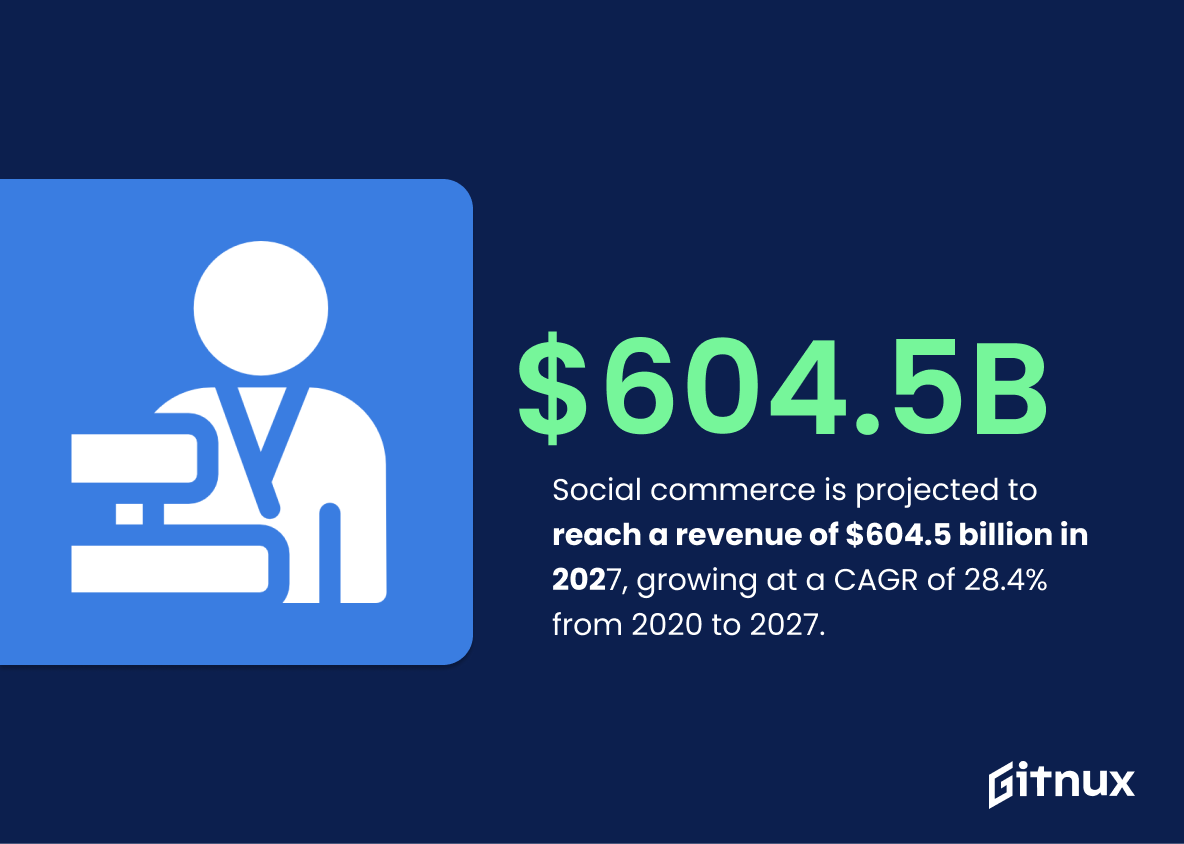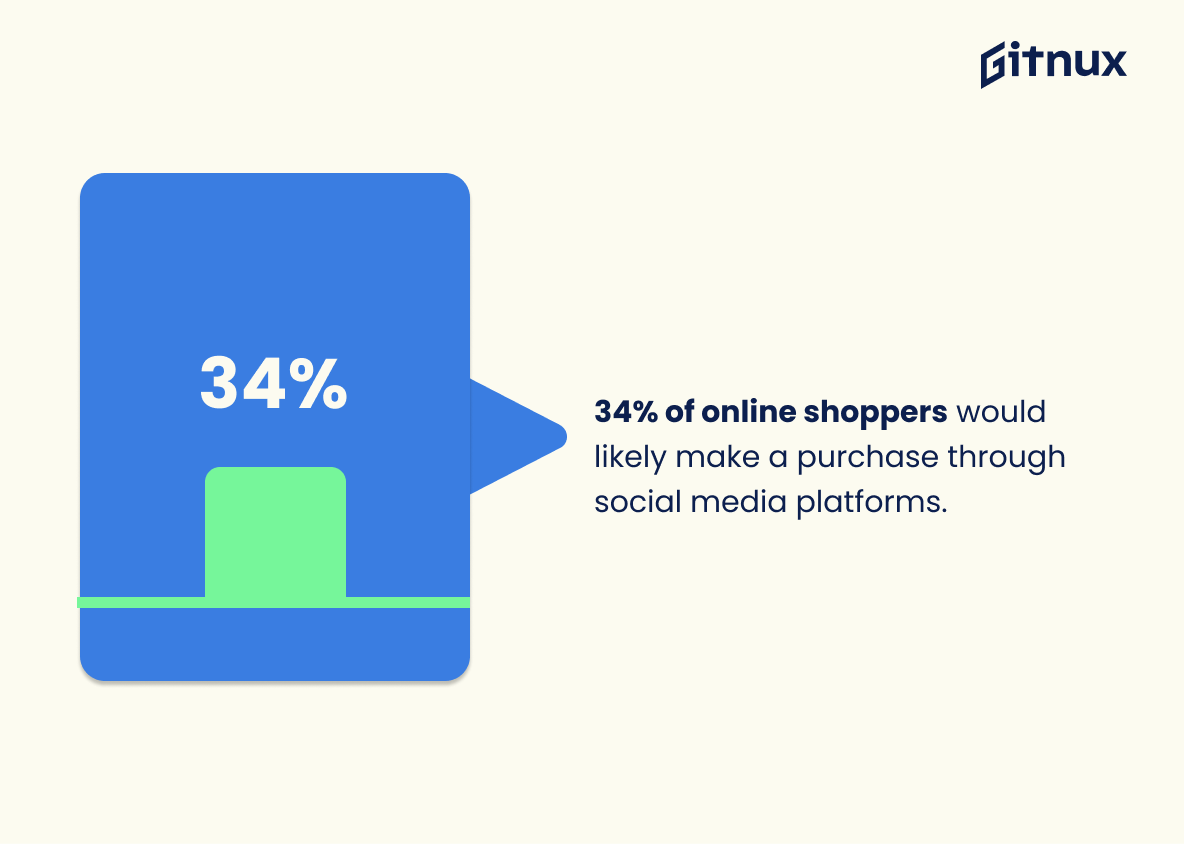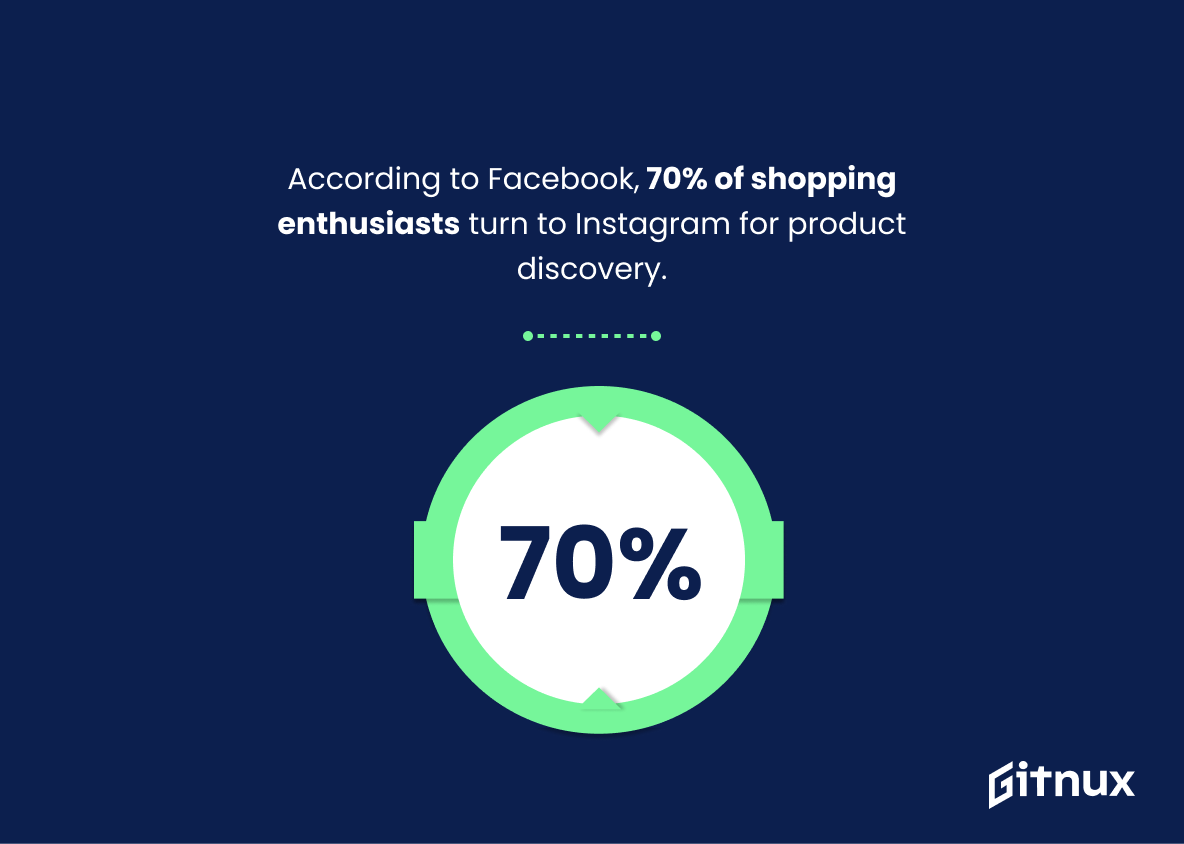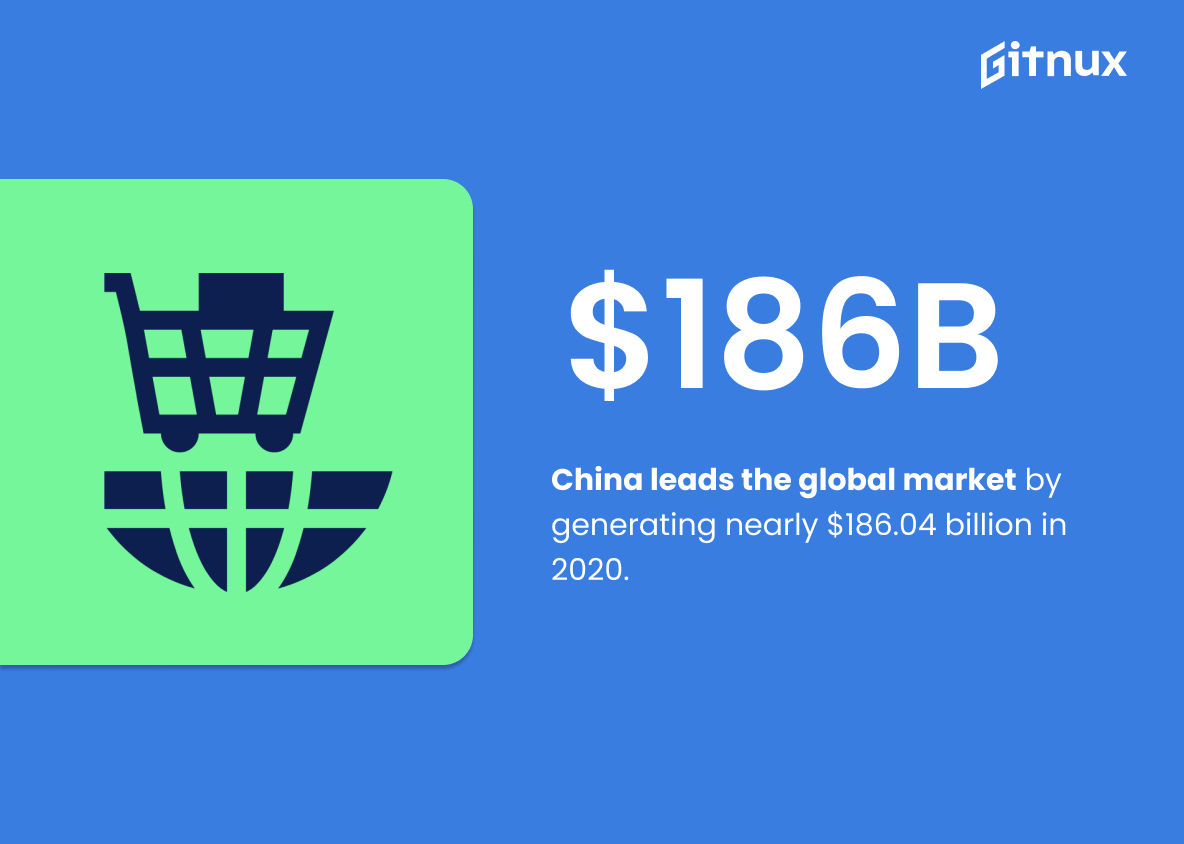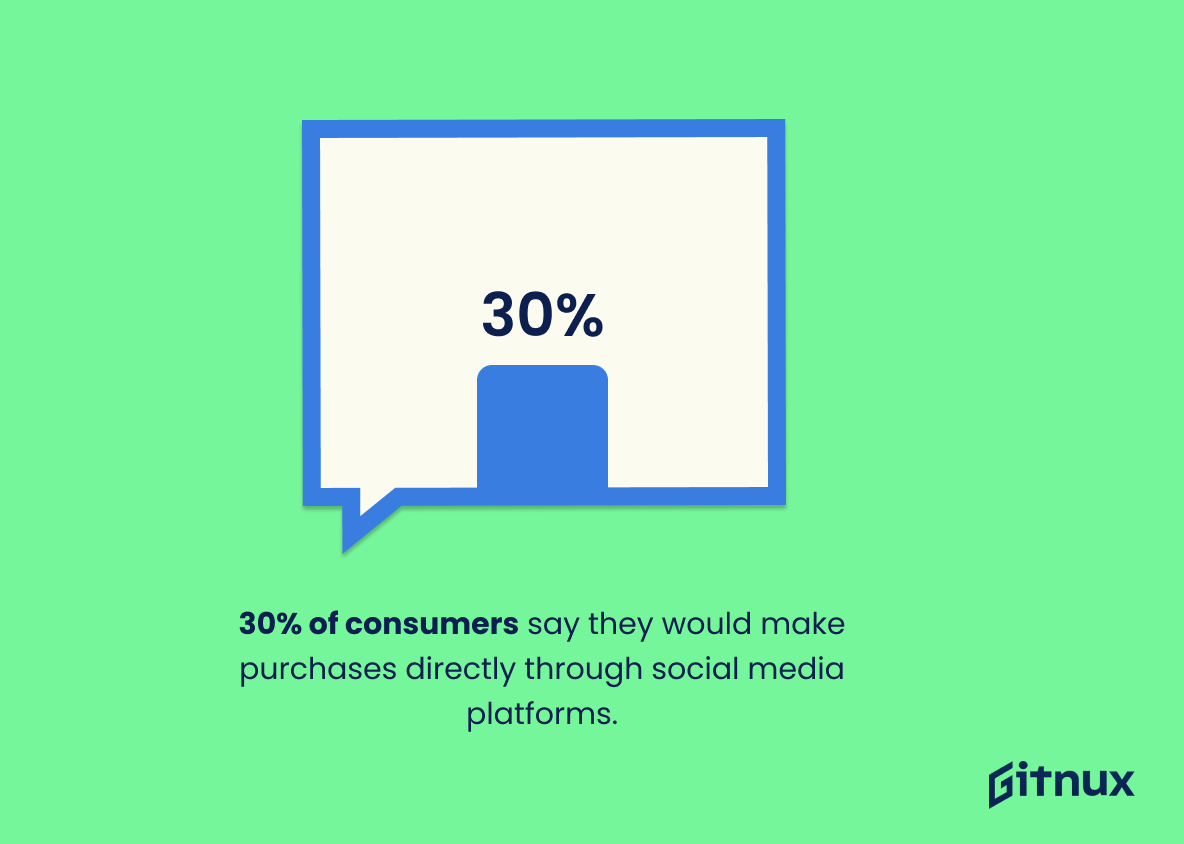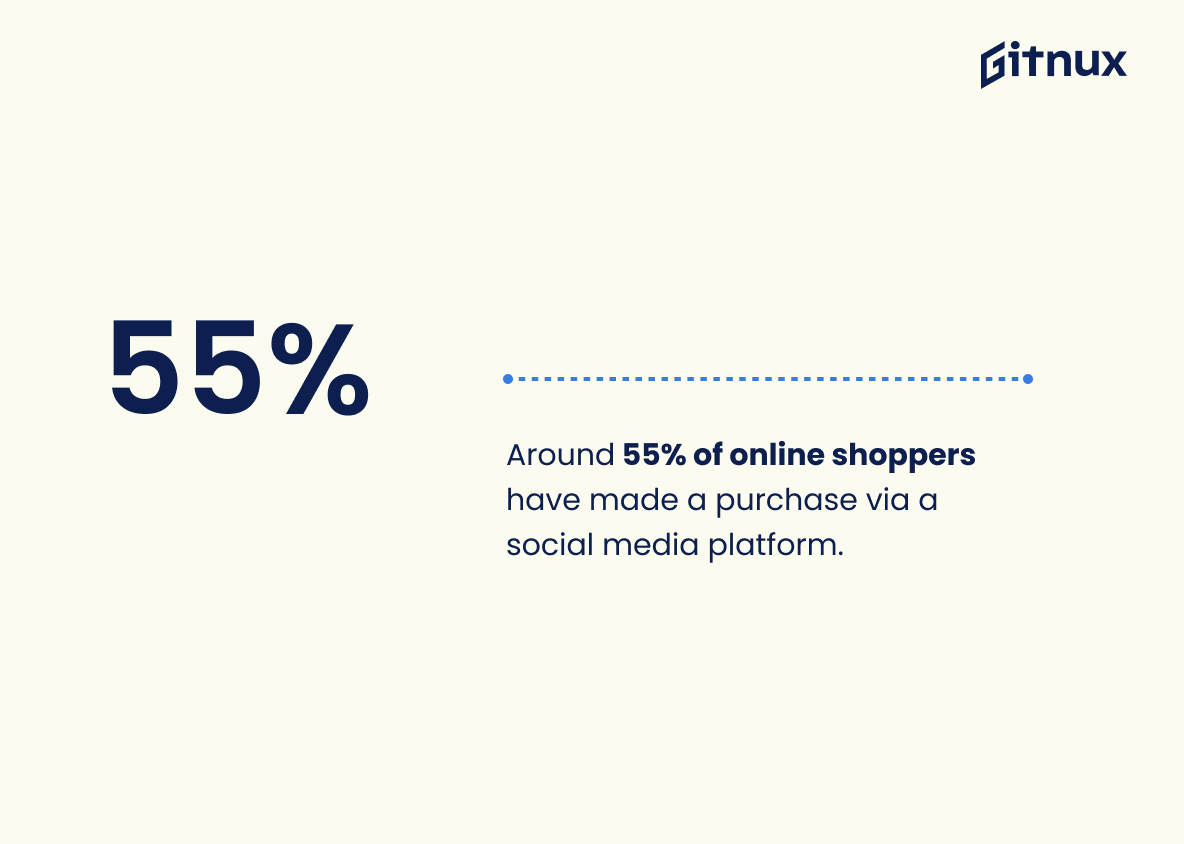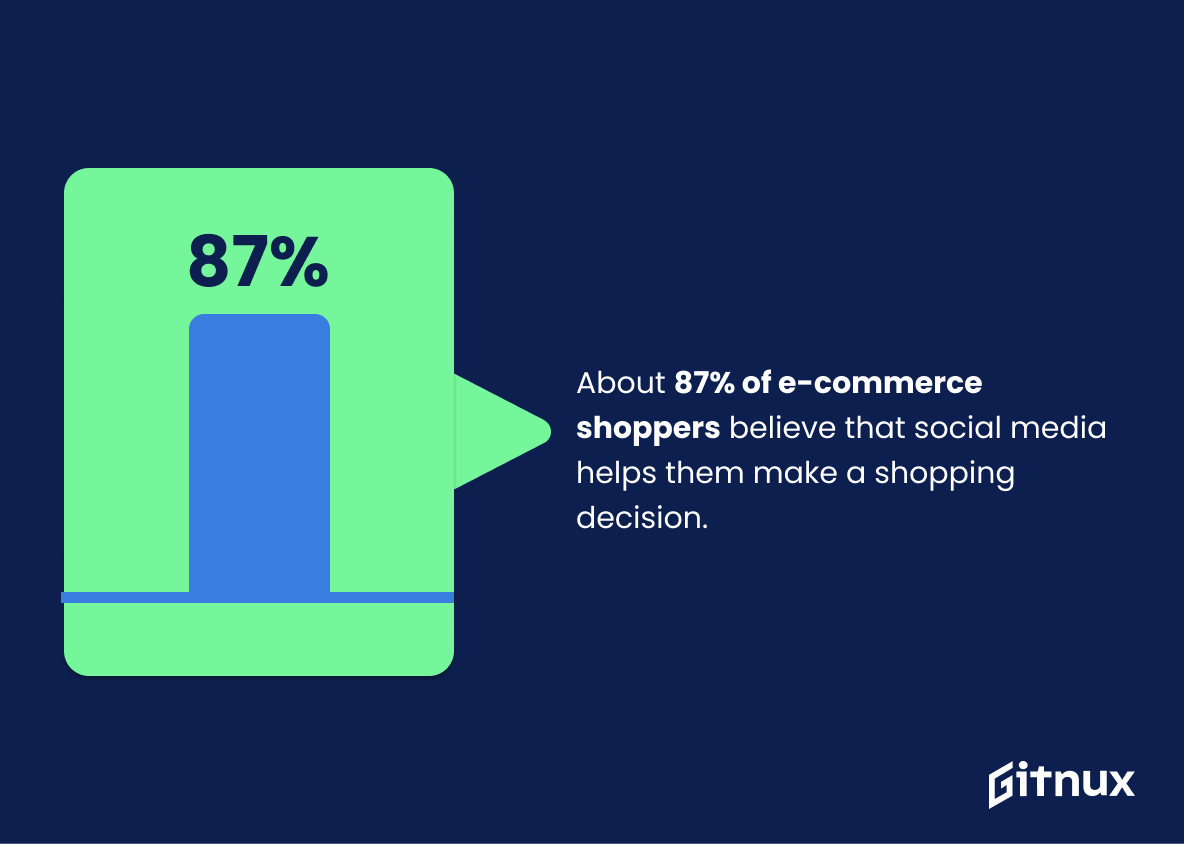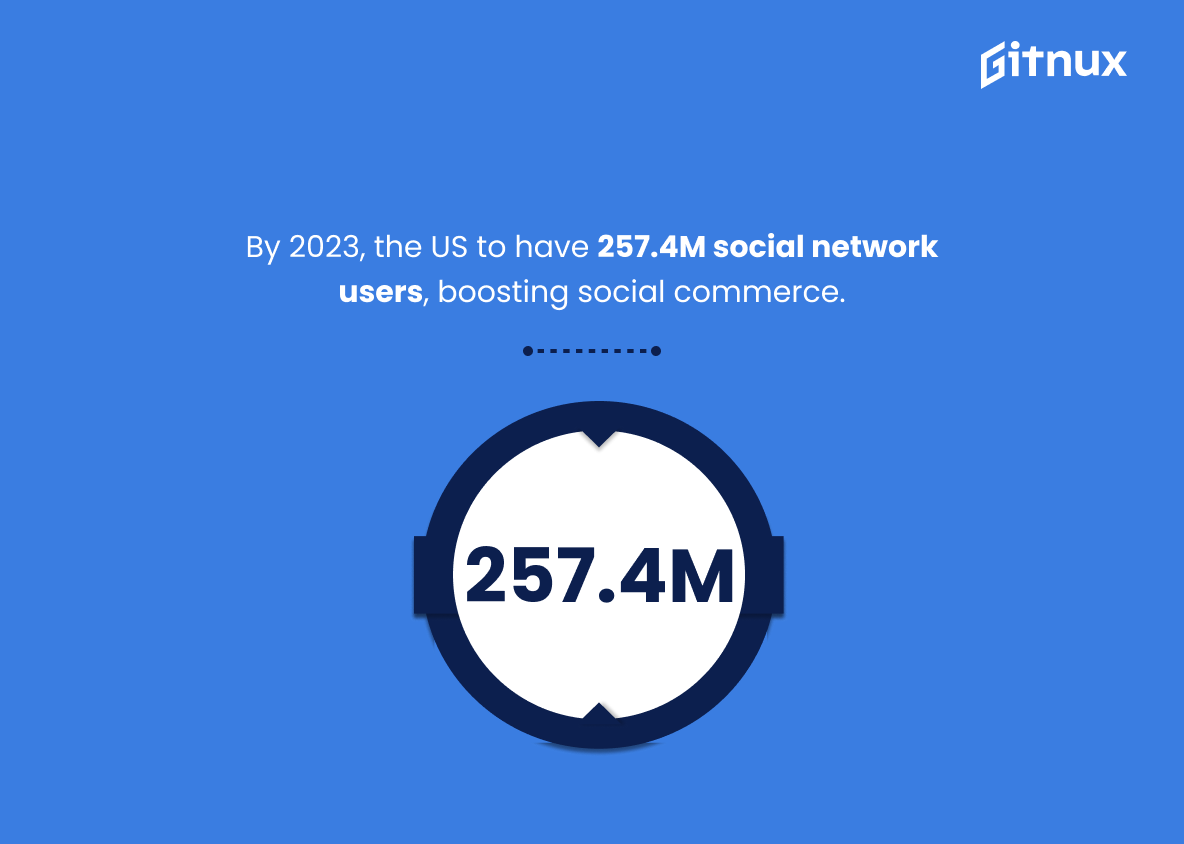Welcome to our deep dive into the world of social commerce industry statistics. With the explosive growth of social media and its integration in the daily lives of millions, it has transformed from a simple communication medium to an influential marketplace. Social commerce is no longer a buzzword; it’s a substantial frontier in online sales, reshaping consumer behavior and influencing global economic trends.
This blog post aims to provide a comprehensive view of current industry statistics, highlighting how social commerce is revolutionizing the way businesses and consumers interact. It will furnish you with data and figures to understand what this significant shift means for the future of e-commerce. Get ready to explore the fast-evolving landscape of social commerce, enriched with facts and stats, to help you navigate through and strategize effectively in an increasingly social-driven marketplace.
The Latest Social Commerce Industry Statistics Unveiled
Social commerce is projected to reach a revenue of $604.5 billion in 2027, growing at a CAGR of 28.4% from 2020 to 2027.
Given the expected leap of social commerce to a staggering $604.5 billion revenue by 2027, indicating an impressive CAGR of 28.4% from 2020 to 2027, it’s clear we’re on the cusp of a radical transformation in the industry. This dramatic forecast projects a virtual tsunami of growth influencers, businesses, entrepreneurs and customers alike should take into consideration.
In the context of illuminating the dynamism within the Social Commerce Industry, these statistics serve as a barometer of expected trends, and thus potentially revolutionize investment strategies, marketing approaches and the evolving consumer behavior. The looming paradigm shift in the e-commerce scene triggers imagination about the possibilities and opportunities afforded by this trajectory, making it a key highlight when dissecting social commerce industry statistics.
The global social commerce market is expected to grow from $89.4 billion in 2020 to $604.5 billion by 2027.
Reflecting upon such an exponential projected growth in the global social commerce market, from $89.4 billion in 2020 to a staggering $604.5 billion by 2027, brings into focus the dynamism and potential that lie within the industry. This remarkable explosion of growth is not just a testament to the industry’s robustness, but it also serves to illustrate the escalating interaction between social media and commerce, symbolizing a paradigm shift in how businesses and consumers interact.
As we delve deeper into the world of industry statistics, this growth rate shows the exciting voyage that lies ahead for both businesses and consumers, revealing the immense opportunities and challenges that are set to redefine the landscape of social commerce.
The Asia Pacific market dominated the social commerce market, with over 60% market share in 2020.
Painting a vivid picture of the social commerce landscape, noting that the Asia Pacific region held an impressive 60% market share in 2020 puts a steering wheel in the hands of the readers. It provides clear evidence of how different regions are utilizing social commerce, with Asia Pacific being a front-runner.
Comprehensive illumination of this trend opens up conversation threads around the strategies employed within the Asia Pacific region and encourages readers to investigate what is driving this dominance. Furthermore, it sheds light on opportunities for market growth and expansion in other regions, prompting important dialogue on how to replicate this success trend elsewhere in the global social commerce market.
34% of online shoppers would likely make a purchase through social media platforms.
Highlighting 34% of online shoppers willing to make a purchase through social media platforms underscores a substantial shift in consumer behavior. It breathes life into the evolving narrative of the social commerce industry and its rising importance. It signals to businesses striving to capture expanded market share, the untapped potential of infusing their social media strategies with commerce capabilities.
This data point paints the picture of the constantly emerging and digitally savvy shoppers ready to click ‘buy now’ on their favorite social media platforms. This statistic also plays a pivotal role in showcasing the strategic direction forward for online retailers, underlining the importance of a robust social media presence to drive sales and engagement.
According to Facebook, 70% of shopping enthusiasts turn to Instagram for product discovery.
Delving into the nuances of Social Commerce Industry Statistics, it’s intriguing to note the embedded symbiosis of social media and shopping, particularly through the lens of Facebook’s observation that 70% of shopping enthusiasts resort to Instagram for product discovery. This metric underscores Instagram’s pivotal role in shaping consumer behaviors and purchasing decisions, proving it to be a fertile ground for marketers to sow the seeds of their products and ideas.
Essentially, Instagram transforms into a virtual storefront, drawing in a majority of shopping aficionados intrigued by its unique blend of visual inspiration. This insight offers valuable direction for businesses seeking to maximize their social commerce strategies, enabling them to target their efforts where they potentially count the most.
China leads the global market by generating nearly $186.04 billion in 2020.
As we burrow deeper into the realm of Social Commerce Industry Statistics, we encounter a towering giant, China, casting a vast shadow with its impressive generation of nearly $186.04 billion in 2020. This staggering figure isn’t just for show, it’s the economic epicenter of the global market where business realities are being reshaped. This immense contribution vividly illustrates how China’s digital commerce world is a force majeure, a vital heartbeat driving the global social commerce sector relentlessly forward.
Whether it’s through highly interactive live streams or meticulously curated influencers’ posts on social platforms, the Chinese social commerce model is creating ripples that are shaping the industry’s future terrains elsewhere. Indeed, if one wishes to understand the commercial potential of fusing social media with retail, they must not overlook China’s example.
30% of consumers say they would make purchases directly through social media platforms.
In mapping the landscape of the Social Commerce industry, the statistic that 30% of consumers are willing to make purchases directly through social media platforms illuminates a significant trend. This trend underscores the shifting nature of consumer behavior and the increasing relevance of social media platforms as not just communication tools, but also as avenues for business transactions.
Effectively, this percentage shows how social commerce has effectively bridged the gap between social interactions and commerce, creating new opportunities for businesses in this digital age. This is a compelling message for any business or marketer looking to expand their digital footprint and extend their market reach. Moreover, the statistic underlines the considerable potential lying untapped in this space, waiting for effective exploitation and exploration.
Around 55% of online shoppers have made a purchase via a social media platform.
This intriguing statistic serves as a testimony to the exponential growth and influence of social commerce. It places a critical spotlight on the vital role of social media platforms in shaping purchasing decisions, acting as a catalyst in turning casual browsing into direct sales. The figure, a robust 55%, underscores a powerful shift in consumer behavior – a pivot towards one-click, no-frills, impulsive buying.
In our increasingly digital world, evaluating these social commerce industry statistics is tantamount to understanding and predicting consumer patterns in a socially-connected marketplace. As a compass directing us towards future market trends, this statistic should not be ignored but rather capitalized on in strategizing for the evolution of online retail.
About 87% of e-commerce shoppers believe that social media helps them make a shopping decision.
Diving headfirst into the dynamic world of social commerce, we discover a remarkable fact. Picture this – a vast majority of around 87% of e-commerce shoppers assert that their purchase decisions are influenced by social media. This is an illuminating revelation of critical importance for any discussion about Social Commerce Industry Statistics.
Why is it significant? Well, it underscores the power and relevance of social media not just as a communication and engagement tool, but as a potent driver of shopping decisions in the vast and ever-evolving e-commerce marketplace. It’s a clear indicator that for those in the e-commerce industry, making strategic and effective use of social media platforms isn’t just an option – it’s a necessity for survival and growth. It’s a testimony to the rapidly transforming landscape of commerce, where consumers are turning to their peers and the chatter of social media rather than traditional retail outlets for influencing their purchase decisions. Not only does this offer intriguing insights, but it also sets the path for possibilities on how to shape strategies within the realm of social commerce.
By 2023, the projected number of social network users in the US will be 257.4 million, making it a preferred place for social commerce.
As we delve into the world of social commerce industry statistics, let’s take a small detour and focus on a rather compelling future projection. Imagining the year 2023 isn’t that difficult, so let’s all fast-forward a bit and envision a scenario where 257.4 million social network users are active in the US. Exciting, isn’t it?
But why, you ask? Well, in the ever-evolving world of social commerce, this is an explosive revelation. With such an enormous crowd interconnected on social media platforms, the US is set to be a powerhouse for social commerce, a thriving marketplace that businesses of all sizes cannot afford to ignore.
Whether you’re an established brand or a start-up trying to carve your niche, the exponential increase in the number of social network users forecasts a fertile ground for social commerce to flourish. Not to mention, it presents a successful framework for enhancing customer engagement and driving sales.
In essence, this projection isn’t merely a random figure; it’s a reflection of a marketplace brimming with enormous potential. The US, home to a rapidly escalating number of social media users, earmarks a significant leap towards social commerce, symbolizing a shift in online buying behavior that cannot be overlooked.
80% of respondents are likely to purchase an item based on the content of a brand’s social media page.
Delving into the realm of Social Commerce Industry Statistics, the assertion that “80% of respondents are likely to purchase an item based on the content of a brand’s social media page” serves as a solid pillar of understanding. This numerical presentation underpins the profound impact of social media content on consumer purchasing decisions, an indicator that could guide businesses in strategizing their online engagement and content creation.
Additionally, this statistic illuminates the vast potential of social media as a commerce platform, transforming traditional methods of marketing into an interaction-centered, consumer-driven landscape. Hence, businesses that can adeptly harness social media content could tap into this 80% consumer pool to increase sales and expand market territory, supporting the evolution of the social commerce industry.
Social commerce sales in the US grew by 38.9% in 2020 reaching $26.9 billion.
Highlighting the extraordinary 38.9% surge in US social commerce sales to the dizzying peak of $26.9 billion in 2020 lends a powerful credibility punch to our discussion on Social Commerce Industry Statistics. It underscores not only the burgeoning potential of this industry but also the accelerating pace at which consumers are embracing this form of shopping. These figures solidly affirm the importance of understanding and leveraging social commerce to stay competitive in the rapidly evolving e-commerce landscape.
73% of global consumers are likely to buy a product they see in a brand’s social media feed.
Showcasing the power of social media for product promotion, the statistic reveals a critical emerging trend in the social commerce industry. With an overwhelming 73% of global consumers likely to make a purchase from a product highlighted in a brand’s social media feed, it underlines the increasing role that social media plays as a driving force in consumer buying behaviour.
Not just an avenue for branding and outreach, social media platforms have now evolved to a potent marketplace captivating customers right where they spend a considerable chunk of their daily lives. Therefore, this striking revelation unmistakably places social commerce on the map for brand strategists, planning their future sales and marketing moves in the ever-competitive business landscape.
Live streaming in social commerce generated around $60 billion in global sales in 2019.
Picturing the sphere of the social commerce industry, one cannot overlook the waterfall of cash cascading from the phenomenon of live streaming. In the year 2019 alone, live streaming on social commerce platforms unleashed a powerful tide amounting to around $60 billion in global sales. With such colossal earnings crowning the realm of live streaming, businesses have a sprawling playground to exploit and harness profits. This key figure serves as a testament to the potential of integrating live streaming into a social commerce strategy, solidifying it as a veritable gold mine in the industry’s statistical portfolio.
30% of US internet users aged 18-34 have purchased something through social media.
As we navigate the vibrant social commerce landscape, the statistic that highlights how 30% of US internet users aged 18-34 have purchased something through social media serves as a compelling proof point. In the realm of social commerce industry statistics, this data vector becomes especially pertinent.
It underscores the burgeoning potential that this particular age group holds for businesses, given their demonstrated affinity for social commerce. This data thereby reaffirms that social media platforms are evolving from spaces of mere social interaction to robust marketplaces. In the intricate tapestry of social commerce, this serves as a vivid testament to where marketers should focus their efforts and strategies for a prosperous future in e-commerce.
70% of Gen Z consumers find shopping on social media platforms more convenient.
Undeniably, the prominence of social commerce cannot be overlooked in the given scenario where 70% of Generation Z consumers opt for social media platforms for their shopping needs, illustrating an irrefutable shift in consumer behavior. The magnetic pull of social media shopping provides an unfiltered lens into the transformative shopping patterns vividly embraced by these digital natives.
Picture this stark reality: a swirling vortex of consumers who are no longer confined to the traditional brick-and-mortar stores or orthodox online portals. Instead, they are leaning towards a more convenient, interactive, and social shopping experience. Beyond a shadow of a doubt, this highlights a golden opportunity for businesses to sink deep roots in the fertile soil of social commerce, marking an era of unprecedented growth and potential in this industry.
49% of UK social media users make a purchase after seeing an ad on social platforms.
Diving right into the heart of the vibrant social commerce landscape, it becomes clear what immense power lies in crafting captivating social media ads. When considering that a significant 49% of UK social media users are nudged into making a purchase after just one glimpse of an advert on their social platforms, the potential to buoy sales skyrockets. This striking figure is a resounding testament to the crucial relationship between social media and the eCommerce industry.
Indeed, each effortless scroll and tap transforms into a powerful fuel driving the engine of social commerce, underscoring the shift in consumer behavior and the metamorphosis of conventional shopping habits. So, to succeed in the social commerce arena, this marketer’s dream statistic cannot be overlooked, further reinforcing the need for strategic, precisely targeted advertising efforts.
A Q3 2020 survey indicated that 18.3% of US consumers had purchased products directly on Facebook.
Diving into the realm of social commerce industry statistics, one unearths a nugget of revealing data: in Q3 2020, a significant 18.3% of US consumers were found to have purchased products directly on Facebook. Acting as a testament to Facebook’s burgeoning influence as a shopping platform, this number provides a mirror to the rising trend of social-commerce adoption among consumers—a trend that is only expected to escalate further.
This quantifiable evidence thoroughly highlights the proliferating symbiosis of social media and e-commerce, underscoring the necessity for businesses to not only maintain a strong social media presence, but also leverage these platforms for direct product sales in the pursuit of tapping into this sizable and growing Facebook-commerce crowd. The gravity of this statistic lies in its potential for shaping future marketing strategies, offering businesses compelling reasons to make a marked shift towards social-commerce practices.
Conclusion
The explosion of data on social commerce clearly indicates that this is not just a passing trend, but a significant shift in the way businesses and consumers interact. These statistics underscore the importance of capitalizing on this platform, whether it’s through targeted social media ads, shoppable posts, or robust social engagement.
The future of retail lies in a seamless blend of social interaction and online shopping, making it essential for businesses to adapt in order to thrive in the era of social commerce. Stay ahead of the curve by understanding and integrating these social commerce industry statistics into your business strategy. It’s the smart way to secure growth, enhance customer engagement, and boost profitability in the digital age.
References
0. – https://www.www.prnewswire.com
1. – https://www.mention.com
2. – https://www.www.annexcloud.com
3. – https://www.www.globenewswire.com
4. – https://www.www.bizreport.com
5. – https://www.www.businessinsider.com
6. – https://www.sproutsocial.com
7. – https://www.www.statista.com
8. – https://www.www.alliedmarketresearch.com
9. – https://www.www.emarketer.com
10. – https://www.www.grandviewresearch.com
11. – https://www.www.smartinsights.com
12. – https://www.digiday.com
13. – https://www.www.bigcommerce.com
14. – https://www.www.adweek.com
15. – https://www.www.outerboxdesign.com
